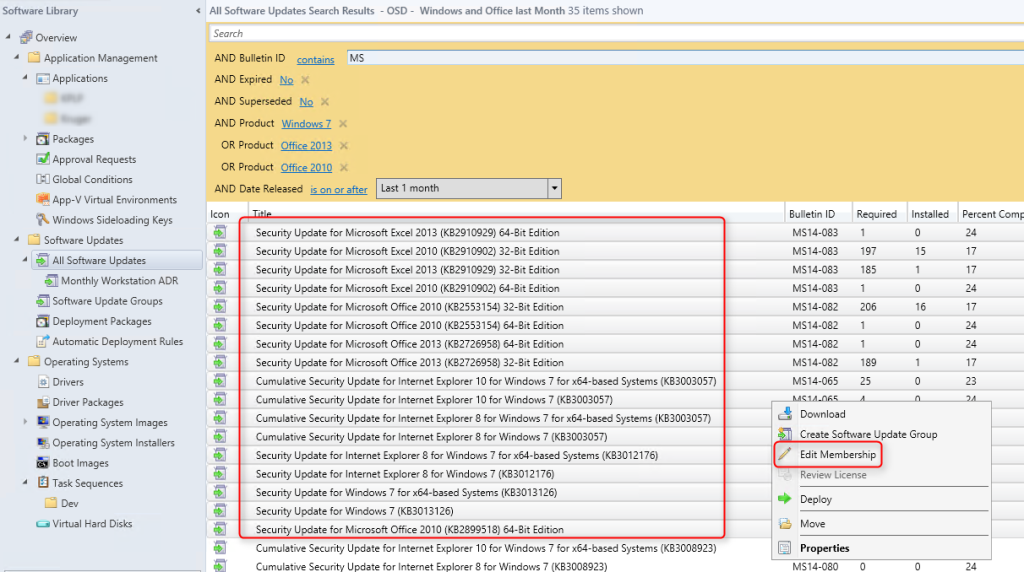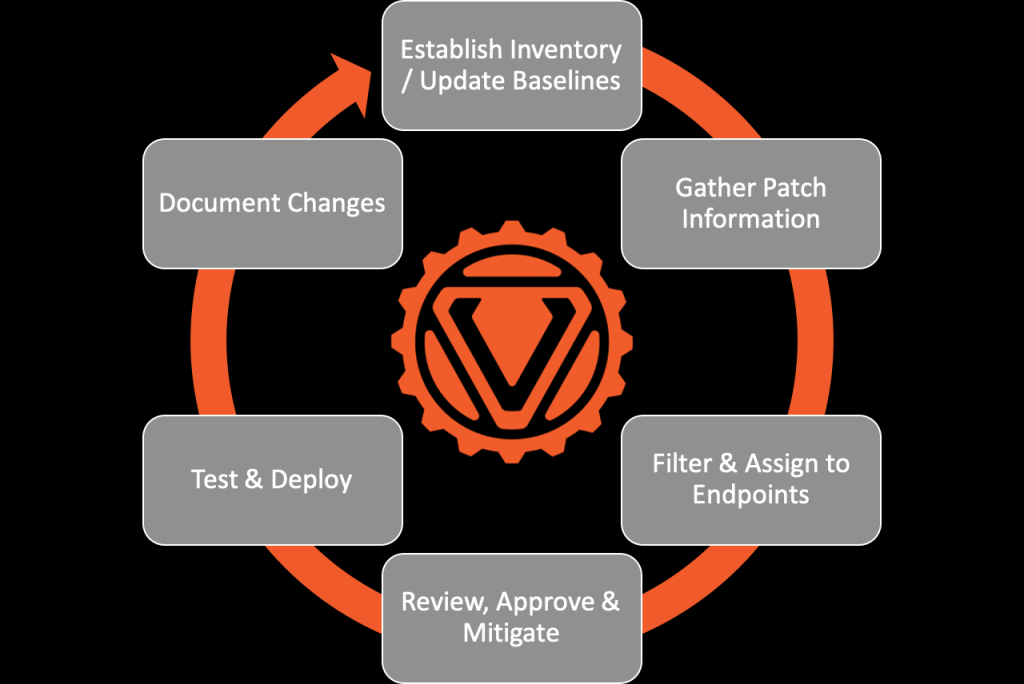Master The Art Of Software Patching With Our Comprehensive Tutorial
Software Patch Tutorial
Introduction
Hello Readers,
2 Picture Gallery: Master The Art Of Software Patching With Our Comprehensive Tutorial


Welcome to our tutorial on software patching. In this article, we will provide you with a comprehensive guide on how to apply software patches effectively. Whether you are a beginner or an experienced user, this tutorial will equip you with the necessary knowledge to ensure your software remains up-to-date and secure.

Image Source: systemcenterdudes.com
Software patches are essential updates provided by software developers to fix bugs, enhance features, and address security vulnerabilities. By regularly applying patches, you can ensure that your software functions optimally and is protected against potential threats.
In this tutorial, we will cover the basics of software patching, including why it is important, who should apply patches, when to install them, where to find patches, and how to apply them. Additionally, we will discuss the advantages and disadvantages of software patching and address common questions users may have. So, let’s dive in and learn more about software patching!
What is Software Patching?
Software patching refers to the process of updating software applications to fix issues, improve functionality, and enhance security. It involves applying patches, which are small pieces of code that modify or replace existing software components. These patches are typically released by software developers in response to identified bugs, vulnerabilities, or the introduction of new features.

Image Source: verveindustrial.com
When a patch is released, it is crucial to apply it promptly to ensure the software remains stable, secure, and operates at its best. Patching helps to eliminate software vulnerabilities, optimize performance, and provide users with an enhanced experience.
Software patching is a vital practice for individuals, businesses, and organizations of all sizes. It helps protect sensitive data, prevent security breaches, and maintain the overall integrity of software systems.
Now that we understand what software patching is, let’s explore who should apply patches.
Who Should Apply Patches?
Software patches should be applied by anyone who utilizes software applications, regardless of whether they are individual users or part of an organization. Both personal and professional users can benefit from regular patching to ensure their systems are secure and running smoothly.
Individual users should regularly check for patches for the software applications they use, such as operating systems, antivirus software, web browsers, and productivity tools. By applying these patches, users can protect their personal data, prevent system crashes, and ensure optimal software performance.
Organizations, on the other hand, should have dedicated IT teams or personnel responsible for managing software patching across their networks. These teams ensure that all software applications and systems within the organization receive timely and appropriate patches. This helps safeguard critical business data, maintain productivity, and protect against potential cyber threats.
Now that we know who should apply patches, let’s move on to when patches should be installed.
When Should Patches be Installed?
Installing patches promptly is essential to maintaining the security and functionality of software applications. Software developers release patches on a regular basis, often in response to identified vulnerabilities or issues.
It is recommended to install patches as soon as they become available. Delaying the installation of patches can increase the risk of cyber attacks, as hackers often exploit known vulnerabilities in software systems. By promptly applying patches, you can minimize these risks and ensure your software remains secure.
In addition to immediate installation, it is advisable to enable automatic updates whenever possible. This allows patches to be installed automatically, ensuring that your software is always up-to-date and protected.
Now that we understand the importance of timely patch installation, let’s explore where you can find software patches.
Where Can You Find Software Patches?
Software patches can be obtained from various sources, depending on the software application being patched. Here are some common places to find software patches:
Official Websites: Most software developers have official websites where they provide patches and updates for their products. Visit the official website of the software you are using to find the latest patches.
Software Update Tools: Some applications come with built-in update tools that automatically check for and install patches. These tools can be found within the software’s settings or preferences.
App Stores: For mobile applications, patches are often distributed through app stores such as the Apple App Store or Google Play Store. Check for updates within the respective app store on your device.
Third-Party Websites: In some cases, software patches may be available on third-party websites that specialize in software updates and downloads. Exercise caution when downloading patches from these sources and ensure they are reputable and trustworthy.
Once you have located the appropriate patch, it’s time to apply it. Let’s move on to the next section, where we will discuss how to apply software patches.
How to Apply Software Patches?
Applying software patches may vary depending on the software application and the operating system you are using. However, the general process typically involves the following steps:
Step 1: Backup Data: Before applying any patches, it is essential to create a backup of your data. This ensures that in case of any issues during the patching process, you can restore your system to its previous state.
Step 2: Check for Patches: Visit the official website of the software or use the built-in update tool to check for available patches. Download the appropriate patch for your specific software version.
Step 3: Read Instructions: Before applying the patch, carefully read any accompanying instructions or documentation provided by the software developer. These instructions may include specific steps or precautions to ensure a smooth patching process.
Step 4: Apply the Patch: Follow the instructions provided to apply the patch to your software. This may involve running an installer, executing a command, or replacing specific files within the software’s installation directory.
Step 5: Restart if Required: After applying the patch, restart your computer or the software application as instructed. This allows the changes to take effect and ensures the patch is fully applied.
Step 6: Test the Software: Once the patch is applied and the system is restarted, thoroughly test the software to ensure it is functioning correctly. Verify that any previously identified issues or vulnerabilities have been resolved.
Step 7: Regularly Check for Updates: Remember to regularly check for new patches and updates to keep your software current and secure.
By following these steps, you can effectively apply software patches and keep your applications up-to-date and protected.
Advantages and Disadvantages of Software Patching
Software patching offers several advantages, but it is not without its drawbacks. Let’s explore both the pros and cons of software patching:
Advantages of Software Patching
1. Security Enhancement: Patches often address security vulnerabilities, making your software more resistant to cyber attacks.
2. Bug Fixes: Patches fix software bugs, improving stability and preventing crashes or errors.
3. New Features and Enhancements: Patches may introduce new features or enhance existing ones, providing users with an improved experience.
4. Compatibility Updates: Software patches can ensure compatibility with new hardware or software configurations, allowing you to utilize the latest technologies.
5. Performance Optimization: Patches optimize software performance, resulting in faster and more efficient operation.
Disadvantages of Software Patching
1. Potential Incompatibility: In some cases, patches may not work well with certain hardware or software configurations, leading to compatibility issues.
2. Unforeseen Side Effects: Applying a patch can sometimes introduce new bugs or conflicts within the software, causing unexpected issues.
3. Downtime and Interruptions: Patching may require system restarts or temporary interruptions in software availability, impacting productivity.
4. Dependency on Developers: Users rely on software developers to release timely patches and updates, which may not always happen promptly.
5. Patch Management Complexities: Organizations with numerous software applications may face challenges in managing and deploying patches across their networks.
While software patching provides numerous benefits, it is essential to consider the potential drawbacks and weigh them against the advantages when deciding to apply patches.
Frequently Asked Questions (FAQ)
1. Is it necessary to apply software patches?
Yes, it is crucial to apply software patches regularly. Patches address security vulnerabilities, fix bugs, and improve software functionality.
2. How often should I check for software patches?
It is recommended to check for software patches at least once a week, although the frequency may vary depending on the software applications you use.
3. Can I apply patches manually?
Yes, patches can be applied manually by following the instructions provided by the software developer. However, enabling automatic updates is recommended for convenience and timely patch installation.
4. What happens if I don’t apply software patches?
By not applying software patches, your software may remain vulnerable to cyber attacks, encounter stability issues, or miss out on important bug fixes and enhancements.
5. How can I ensure that patches are safe to install?
To ensure the safety of patches, it is best to obtain them from official software sources or trusted third-party websites. Exercise caution when downloading patches from unknown sources.
Conclusion
In conclusion, software patching is a crucial practice for maintaining the security, stability, and performance of software applications. By regularly applying patches, users can protect their data, prevent security breaches, and enjoy an enhanced user experience.
We discussed the importance of software patching, who should apply patches, when to install them, where to find patches, and how to apply them effectively. Additionally, we explored the advantages and disadvantages of software patching and addressed common questions users may have.
Remember, staying up-to-date with software patches is an ongoing process. Regularly check for new patches, enable automatic updates whenever possible, and apply patches promptly to ensure your software remains secure and optimized.
Final Remarks
Thank you, Readers, for joining us in this tutorial on software patching. We hope you found the information valuable and informative. Remember to prioritize software patching as part of your cybersecurity practices and stay proactive in keeping your software up-to-date.
Disclaimer: The information provided in this article is for educational purposes only. The author and the website are not responsible for any damages or losses incurred as a result of applying software patches.
This post topic: Software Tutorials

